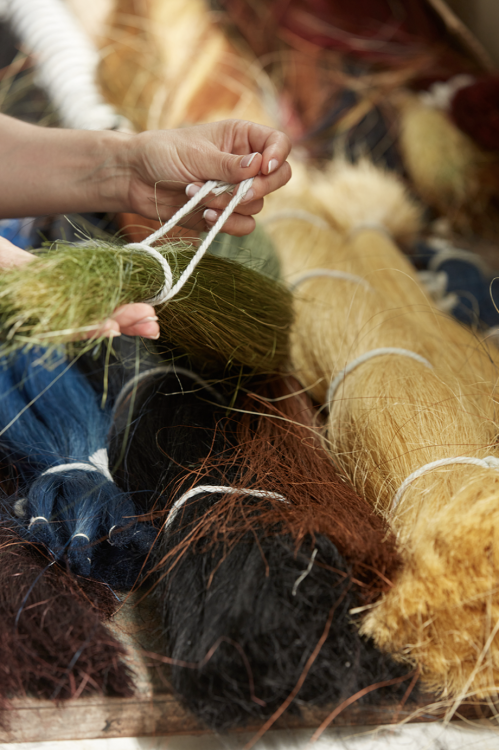In a small factory in southern France, artisans weave with a breathtakingly delicate material: single strands of hair.
By Hadley Keller

Photo Courtesy of Le Crin
On a gate outside a small, stucco building in the town of Challes, France (population: 1,220) is a modest black sign emblazoned with the gold silhouette of a horse. Walk through this gate — into a dusty, unassuming courtyard — and you may have stepped back in time a few centuries. Here, at Manufacture du Crin, a handful of weavers are keeping alive an art practice so intricate that it’s died out in all other locations worldwide: the art of weaving horsehair.

Photo Courtesy of Le Crin
The weavers of Le Crin have been spinning horsehair fabric since 1814, before advancements in technology all but eradicated hand looms, let alone hand looms where each inch of fabric may take hours to complete. But within the walls of its modest studio — which, save for the weavers’ clothing and a few plastic storage bins, looks practically unchanged since its founding era—the practice of horsehair weaving is spun into the most high-end offerings of the textile company Métaphores.

Photo Courtesy of Le Crin
Métaphores belongs to the textile division of another legacy French company that prides itself on painstakingly detailed craftsmanship: its sister brand, Hermès. Beyond their obvious shared equine themes, Métaphores boasts the same fastidious dedication to precision, quality, and historic savoir-faire as its fashion-world sibling. Many of the weavers at Le Crin learned the craft from their own parents or grandparents; even those with this basic knowledge will work two years in the workshop before they can truly master the skill, which begins dozens of steps before a shuttle ever moves across a loom.

Photo Courtesy of Le Crin
First, the hair, which arrives in two-to-three foot bunches, is hand-combed to remove any knots before it is sorted — strand by strand using tweezers — into groups by color. With like-colored strands together, warps are tied onto bobbins in a technical process that takes around four hours. Finally, weft threads are laid in a trough, where they are inserted, strand by individual strand, into the warp as their weaver throws a special hooked shuttle to catch them.

Photo Courtesy of Le Crin
Woven together with silk, raffia, and other rare materials, the horsehair threads lend a unique structure to the textiles of Métaphores. With more shimmer than raffia but more structure than silk, and a heavy, satin-like hand, they make for an enticingly textural fabric. Textiles with horsehair from Le Crin (distributed as Métaphores in the U.S. through Kravet) have hung in the likes of the Louvre, the Elysée Palace, Buckingham Palace, and the White House (a red jacquard-style was commissioned for the Reagans).They each began with a single hair.
Read more stories in The Quarterly, Issue 2.